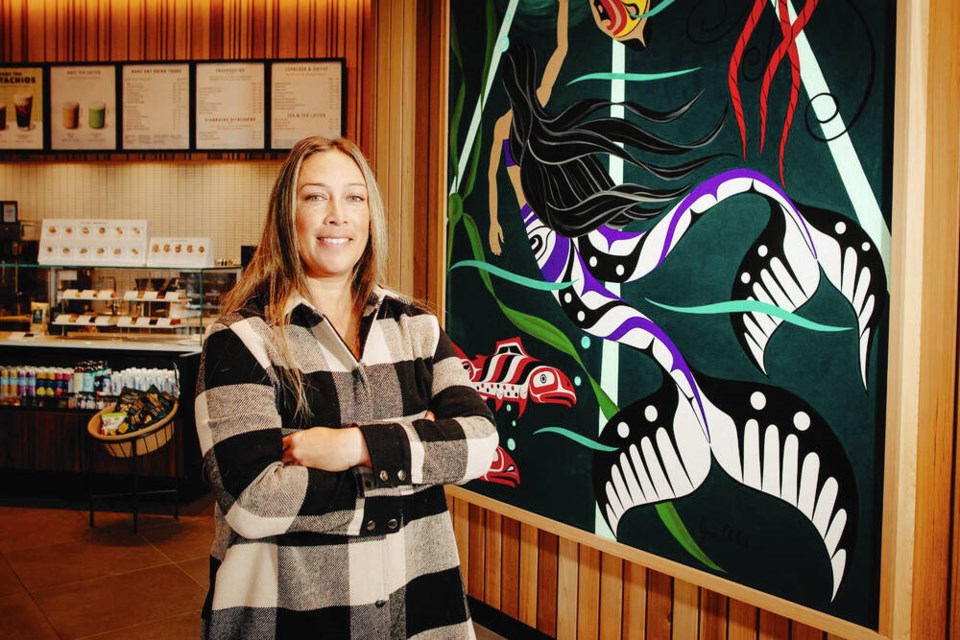A First Nation has opened a Starbucks outlet just outside Campbell River as part of its quest to become economically self-sufficient.
The We Wai Kai store is one of two licensed Starbucks in Canada operated by First Nations. In November, the Muskeg Lake Cree First Nations opened the first First Nation-licensed Starbucks in the country on its Asimakaniseekan Askiy reserve in Saskatoon.
The cedar-clad 1,700-square-foot Campbell River store, which opened last week, sports a large painting by local artist Jessica Chickite depicting the We Wai Kai’s creation story.
A grand opening celebration meant to be held last Friday that would have included speeches, dances, and K’amk’amxwaliła — an eagle down blessing ceremony — was cancelled due to inclement weather, though it could be rescheduled.
Shannon Leisz, vice-president of store development at Starbucks Canada, said the opening of the two First Nations-licensed stores stems from a meeting with the Council for the Advancement of Native Development Officers (Cando) at a conference three years ago.
“We got a chance to learn more about the We Wai Kai community, their values — they got a chance to learn a little bit more about Starbucks.”
Of Starbucks’ nearly 1,500 stores in Canada, 481 are licensed stores operated by third parties, according to the company’s latest quarterly earnings report. The licensing process is often used for Starbucks locations in grocery store chains, airports and post-secondary institutions.
Leisz said Starbucks is open to working with other Indigenous communities, which she sees as a path toward reconciliation. “We’re committed to transparently sharing our progress along the way and continuing with exploring more partnerships.”
The Campbell River store is located in Quinsam Crossing, the First Nation’s commercial area, which We Wai Kai Chief Ronnie Chickite said is now close to 70 per cent leased.
Quinsam Crossing was little more than a gas station and 60 acres of vacant land 17 years ago, he said. “We are creating businesses that are creating employment for ourselves, the community, and also the city of Campbell River.”
The nation looked at the neighbouring We Wai Kum Nation — which developed part of its urban reserve lands into the Discovery Harbour Shopping Centre in Campbell River — as inspiration, Chickite said.
Chickite said the nation is looking at a nearby forested area to further expand Quinsam Crossing in the next year.
In Muskeg Lake, economic development manager Judy Clouthier said for several years, there was just one trailer standing on the nation’s urban commercial reserve, which had been signed over to the nation by the City of Saskatoon and the federal government in 1988.
Today, the urban reserve houses a medical clinic, a commercial centre and a recently built 50,000-square-foot office space where the Saskatchewan Indigenous Gaming Authority is headquartered.



